JOHN DANKOSKY: This is Science Friday. I’m John Dankosky. Well, it’s been a year, hasn’t it? A lot of frustration, disappointment, and heartache– but there were a few bright spots, too. I know I got to spend a lot more time outdoors this year. And I even got to do some reading.
Given that science was so much of the center of our lives throughout this year, it’s not a surprise that we saw so many interesting science books published in 2020– books about the pandemic, about climate change, and about the algorithms that rule our lives, to be sure, but also books about curiosity, those things about the human condition that you maybe finally had time to notice.
For instance, on Twitter, Lauren Slanker shared this book selection with us. She said that her selection was Breath– the New Science of a Lost Art. “It changed the way I think about something as simple as breathing.”
Today, we’d like to highlight some of the science books you may have missed while you were out getting fresh air or helping your kids with distance learning. And we’re going to be hearing some of your suggestions throughout the segment, as well, because we’re joined by a live Zoom audience.
But here to kick off this celebration of science books from 2020, one of the few things we feel confident we can celebrate this year, are my guests, Brian Muldoon. He’s the Children’s Librarian at the Clinton Hill Branch at the Brooklyn Public Library. Brian, welcome.
BRIAN MULDOON: Hi. Thanks for having me.
JOHN DANKOSKY: And returning to round up books this year with us is Valerie Thompson, Senior Editor at Science Magazine in Washington, DC. Hi there, Valerie.
VALERIE THOMPSON: Hi, John. Thanks for having me.
JOHN DANKOSKY: Well, let’s get started here. And Valerie, maybe you can kick things off for us with the first book on your list. It’s a book that happens to be on my list this year, too. And it’s called The Alchemy of Us. Tell us about the author and about why you chose this book.
Yeah, I’m really not surprised that this is on your list, as well. It’s an excellent book. So The Alchemy of Us is written by materials scientist Ainissa Ramirez. And it examines how a number of notable materials were invented and then how they, in turn, went on to shape human culture.
So she writes, for example, about the invention of the phonograph and how it changed how we enjoy music. So the first way that it did that was that it changed music from this communal experience to one where we are able to experience it alone.
And then another interesting way that it changed things is that because instruments like the cello and the violin and guitars produce these very soft tones that were hard for the phonograph to pick up, louder instruments like the piano or the trumpet or the trombone actually became more popular in recorded music, because they were easier to record.
And then I think one of the coolest things about this specific example was that recorded music actually allowed for the cross-fertilization of musical culture– so between jazz and blues and rock and roll, even as the musicians themselves were separated by race politics.
JOHN DANKOSKY: Yeah. This book, Valerie, is on my list in part because Ainissa Ramirez is someone I know who I’ve worked with. She and I worked on a podcast project. And for years, she’s been developing this very keen sense, I think, of how to communicate really important, clear scientific ideas to people through things like sports and music.
And I think that this is something that we’re seeing a lot more of, Valerie, in some of the books that are being written this year. This book by Ainissa Ramirez gives you a real sense of how to unlock some of that curiosity about just things that you didn’t really think about, probably, that are in your everyday life.
VALERIE THOMPSON: Yeah. Yeah. I think that’s a really great point. Another example that she talks about in this book is photographic film. And she writes about how early photographs of Black people were often underexposed because dark skin absorbs more light than white skin and how Kodak actually knew that this was a problem.
But they didn’t reformulate their product until they started getting complaints from furniture manufacturers and confectioners, who started to complain that their customers couldn’t see the difference between wood species and chocolate varieties. So it’s really interesting. The book is packed with these really interesting anecdotes and kind of, like you said, showing the hidden world that maybe we don’t think about underneath everyday objects.
JOHN DANKOSKY: Brian, let’s get to one of the books on your list. It’s one that you have a personal connection with. It’s called The Apocalypse Factory. Tell us about it.
BRIAN MULDOON: Yeah. So The Apocalypse Factory by Steve Olson, who is a journalist out of Seattle with a background in science– and so what this book does is it pretty much traces the history of plutonium, its discovery at UC Berkeley and then its mass production and use in the atomic bomb.
My personal connection with it is that this book focuses on a site called Hanford, which was located in the desert region in Washington state, just kind of in the southern area right on the Columbia River. And my grandfather actually worked at that site. He was a mechanical engineer from it.
So the government comes in, pretty much clears everybody out, and then builds these huge reactors. It was actually the first fully functional nuclear reactors in the world. And then they just start mass-producing plutonium as part of the Manhattan Project.
Almost all the plutonium that was used in our entire nuclear arsenal was produced there. And it continued on well into the Cold War, until it was discontinued in the ’70s. And it remains there to this day, just this kind of huge toxic site. It is actually the most toxic site in the Western Hemisphere. And they’re still trying to figure out how to clean it up.
And what I really enjoyed about this book is that he digs into the site and not just kind of the main physicists and stuff that were working on these projects and chemists. But he also kind of shows what it was like for the machinists who were building the site, the farmers that were having to kind of deal with all the toxic material under the air and things like that, and just the long-running kind of legacy of this thing.
JOHN DANKOSKY: But that’s what’s so interesting about it, too, is this is a piece of history that a lot of people who are, say, interested in World War II history could really sink their teeth into. But this is something that persists to this day. This is a real-life story for real-life people who are living right now. And so it, in that way, is not just a history book.
BRIAN MULDOON: Yeah, exactly. And it’s just got a lot of long-lasting lessons for just kind of careful with what we do when we innovate so quickly, that we’re able to kind of make these huge strides in science, but at what cost and just kind of not really thinking about the future.
JOHN DANKOSKY: So Valerie, you have another book in here. It’s called The Great Indoors. And just the title alone– I think a lot of people are thinking an awful lot about the great indoors, especially as weather gets colder. And we’re going to be stuck inside for an entire winter. So tell us about this book.
VALERIE THOMPSON: Yeah. So obviously, this one feels appropriate, given how much time a lot of us are spending indoors right now. But the book basically encourages readers to think about whether or not the built environment is really serving your needs. And so it’s focused on the behavioral implications of indoor design in a bunch of different contexts.
So can we improve surgical outcomes with better-designed operating rooms? Can we implement more humane design strategies in our prisons? Can we leverage technology to help elderly people stay independent for longer?
JOHN DANKOSKY: Did you have a specific smart design idea that came out of this book that really resonated with you?
VALERIE THOMPSON: I would say one of the things that resonated with me about a particularly bad design, which you would not necessarily think about, would be open-office floor plans. They were the big loser in the design department. The author shows that people who work in open offices actually end up taking more sick days than employees that have their own private workspaces. So I think from a design perspective, that’s something maybe we should be moving away from.
JOHN DANKOSKY: Yes. Yes, indeed. But it’s also interesting, too, whenever there’s a book that’s written in a year like this that doesn’t necessarily have anything to do with the things that we were experiencing.
But then it just seems to be so prescient, so exactly on-the-nose of what we’re thinking about. Valerie, open-office floor plans weren’t people’s favorite thing. But now, they’re going to be outlawed, right? It’s never going to be the same way that it was before. This is a book that actually hit it right on the nose, it seems.
VALERIE THOMPSON: Yeah, exactly. And it’s funny because, like you said, this book was obviously written in pre-pandemic times. But there are a lot of relevant applications.
So for example, she spends a whole chapter talking about microbes in our homes. And this is a time when people are really maybe leaning heavily into the antimicrobial cleaners and things. And that’s something, at least from this book, we’re learning, kind of similar to the human body, our homes have kind of a microbiome.
And it’s not necessarily all bad microbes. And so when we’re cleaning them very thoroughly with all these antimicrobial agents, we could be disrupting the good part of the microbiome. So that’s just something to keep in mind moving forward.
JOHN DANKOSKY: We have a listener suggestion now. Matt Milton has one for us. Matt?
MATT MILTON: Yeah. So I thought the book Entangled Life by Merlin Sheldrake was a really great book about sort of how fungi affect all aspects of biology, but largely their relationship with forest and humans. And yeah. I just thought it was really great. There’s not a lot of popular science books about mycology, so it’s a great addition.
JOHN DANKOSKY: Matt. Thanks so much for that. And Brian, this is on your list, right?
BRIAN MULDOON: Yeah. This was actually probably my favorite book on my list. And one of the things that I really think elevates it above other books on fungi– I’m kind of one of these people who’s long been fascinated by it. I just think it’s cool that they’re kind of like the most alien thing but also totally the most terrestrial thing on Earth.
But the one thing that I think really elevates this one is just the level of the writing. Just he’s got such a poetic turn of phrase. And it really makes it so you can really kind of get deep into the dirt. It’s so sensuous and stuff like that when he’s describing the way mycelium kind of create these huge networks. You really, really get an idea of how it works and kind of what the fungi perspective is.
JOHN DANKOSKY: And it made you feel what it’s like to be a mushroom.
BRIAN MULDOON: Yeah, I think so.
JOHN DANKOSKY: Well, but that’s really interesting, because this isn’t the only book of recent times that has been written on this subject. This is something that more and more people are writing about, thinking about. People care more about mushrooms maybe than ever before.
BRIAN MULDOON: Yeah. Well, they’re fascinating. And this book really, really kind of highlights just how we owe absolutely everything to mushrooms. They just kind of connect these huge, huge massive biomes together and just make it so forests and things like that really function.
And the thing I found most fascinating about this book is that it really shows how mushrooms are kind of almost entirely responsible for life on dry land, that they were the ones that kind of melded with algae and formed lichens and brought– which are kind of progenitors to all plants on land, which obviously changed our atmosphere and gave rise to all other kinds of life.
So I don’t know. I guess they’re kind of like the Illuminati of the natural world. They’re kind of like the underlying force.
JOHN DANKOSKY: Oh, boy. We’re going to give the conspiracy theory books now.
So Valerie, I want to get back to your list. And we’re talking about the best science books of the year, but this doesn’t and shouldn’t exclude works of fiction. I know that you’ve got one of these on your list, too, called Real Life.
VALERIE THOMPSON: Yeah. Yeah. So like you said, normally we’re were talking about science books, we’re talking about nonfiction. But there’s no reason that needs to be the case. And this is a particularly good example.
So Real Life by Brandon Taylor, it follows Wallace, who is a queer Black biochem grad student, as he navigates academia at a predominantly white institution in the Midwest. So the story kind of unfolds. And Wallace is exploring kind of his ambivalence about completing his degree and this kind of larger struggle about where he fits into the broader world.
But I think what makes this book especially important for a scientific audience is its incisive indictment of the subtle and sometimes not so subtle hypocrisies that pervade institutions that like to think of themselves as progressive. So his supervisor is really condescending. He’s fetishized by his program for being the only Black student. And other members of his cohort are questioning the basis for his admission.
In the end, it’s a pretty bleak portrait of academia. But I think it’s one that unfortunately will probably resonate with people from marginalized groups. And I think the way that the story is told is one that’s really interesting and would be difficult to convey in a nonfiction analysis.
JOHN DANKOSKY: Yeah. Could you talk more about that, because some books– some stories just lend themselves toward fiction, whereas others, you really want to hear the real story as told, as reported over time. Why do you think this works so well as a piece of fiction?
VALERIE THOMPSON: Well, it’s interesting because the author himself, before he became a writer, was actually a science grad student. So I think that there’s a lot of truth behind the story itself. But it’s such a personal story, and it’s not something that’s filled with facts and figures and look at this graph and look at these citations.
It’s a gripping story. And along the way, you kind of get this very good sense of what it is like to be a person who comes from a nontraditional background who’s trying to make their way in science. And so I think that for that reason– like I said, it’s just not something that can be easily conveyed in nonfiction.
JOHN DANKOSKY: I’m John Dankosky, and this is Science Friday from WNYC Studios. We’re talking about the best science books of 2020 with Brian Muldoon from the Brooklyn Public Library and Valerie Thompson from Science Magazine.
I should say– maybe this is the right place– that one of the books on my list is a book called Ledger by Jane Hirshfield. She’s a poet. And I talked to her earlier in the year on Science Friday. It was just at the start of the pandemic. And this book is not a book fully about science poems, but she uses science as her sort of through line and touch point for so much.
She writes about climate change. She writes about some of the looming apocalypses that we have coming. And I think, much like what you were saying, sometimes poetry is the only form to get across some very big ideas that are almost too scary to talk about in real life, right? And I feel like this book, Jane Hirshfield’s Ledger, is one that gets that across.
I don’t know, Brian. Did you run across any fiction books this year? I know your list is mostly nonfiction. But do you feel a sense that that’s sometimes the best way to tell the story of science?
BRIAN MULDOON: No, I definitely agree with what both of you guys are saying, that sometimes you really need to kind of stretch the imagination and kind of create these conditions to best tell the story. I can’t think of any books specifically from this year. But there are a couple of science poetry books that I read last year, one that was kind of playful by Brenda Shaughnessy called The Octopus Museum. And it kind of projects a future where climate change has decimated human civilization, and octopi have taken over.
JOHN DANKOSKY: Why not? We’ll give octopi just as good a chance as anyone else to take over when we’re done.
Brian, the next book is another one we talked about on our show. It actually led to one of my favorite segments of the year that Ira Flatow did. And it’s called Clean– the New Science of Skin.
BRIAN MULDOON: Yeah. This one is really, really amusing. This is another one that’s very, very well-written. So James Hamblin, he’s a staff writer for The Atlantic. And he also used to be a working physician.
So he really digs into kind of the skin care industry and just the way we care for skin. And he is kind of the ultimate in practicing what he preaches, in that he has not showered in five years, meaning that he rinses off. And he’s very, very– he makes sure to be very clear that he still washes his hands.
And he understands that that’s an extremely important practice, especially in these days, but that just kind of the way we’re pretty much trained in modern Western society to shower every day, really scrub down with soap and an endless array of skin care products and stuff like that, is not necessarily the best thing for our skin. He doesn’t necessarily say that everybody should just completely give up showering, but maybe re-examine some of your daily hygiene practices.
JOHN DANKOSKY: Did you change anything after reading the book?
BRIAN MULDOON: Yeah. I wouldn’t say that I changed it because of the book. They were already kind of sliding because of the pandemic. But yeah, I definitely felt vindicated by this, in that, yeah, I just kind of let my showering lapse.
And I was starting to notice a difference in just kind of the health of my hair and my skin. And this really kind of illuminated a lot of exactly what was going on. And it’s definitely kind of made me not necessarily need to go back, though I did shower before this segment.
JOHN DANKOSKY: Well, we’re talking here about the best science books of 2020 with Valerie Thompson, Senior Editor at Science Magazine in Washington– Brian Muldoon, Children’s Librarian at the Clinton Hill Branch at the Brooklyn Public Library. We’re going to get to some more ideas on books from some of our Zoom audience, as well. We do have to take a break right now, but we’re going to come back right after this.
This is Science Friday. I’m John Dankosky. We’re recapping some of the best science books that came out this year with my guests, Brian Muldoon, Children’s Librarian at the Clinton Hill Branch of the Brooklyn Public Library, and Valerie Thompson, Senior Editor at Science Magazine in Washington, DC. A reminder that the segment was recorded in front of a live Zoom audience– and if you want to join future Science Friday tapings, you can check out the list at our website, sciencefriday.com/events.
All right. Let’s see. Coming back from the break, Jan Siebert has a question about that ever-looming to-read pile. Jan, go ahead.
JAN SIEBERT: Thanks for taking my question. Well, my question is more not as a book, but the problem of too many books. I noted down two more books which I’m going to order. And I can see the piles growing– so how to be more realistic when buying books or how to find more time for reading all these great books?
JOHN DANKOSKY: What a great question. I don’t know. Valerie, you want to tackle that first? And I want to hear from Brian, too, on this, because this is a big problem for a lot of people who love books, maybe love science books. What do you do?
VALERIE THOMPSON: Yeah. So for me, this is something I deal with all the time. So I run the Book Review section of Science Magazine, which means all of the science books that are going to be published in a year, I’m going to see them all and decide which one to review.
And so I think my advice to you would be, be ruthless. You kind of have to give a book a try. And if it’s not doing it for you, just don’t feel like you have to complete it.
JOHN DANKOSKY: Brian, how about you?
BRIAN MULDOON: Sure. Well, I’ve got a pretty easy solution for the doing away with too much buying of books, and that’s the library. You can always just check it out and not necessarily read it.
But I would try reading more than one book at a time. I usually have two or three going. And usually, if one of them doesn’t really do it for me, I just kind of cast it aside. Also, it’s fine to have a huge stack of books and not get to half of them. You can just not feel guilty about it.
JOHN DANKOSKY: But it sounds like neither one of you are completionists, like you’ve got to finish a book if you start it.
VALERIE THOMPSON: No way.
JOHN DANKOSKY: No, you just don’t have enough time for all that, right?
VALERIE THOMPSON: Yeah. Yeah, there’s just not enough time. No one has enough time for that.
JOHN DANKOSKY: Same thing, Brian?
BRIAN MULDOON: I usually read most books all the way through. But I’m not afraid to just kind of cast one aside if I’m really know not into it or if it’s not the right time to read it.
JOHN DANKOSKY: So Brian, let’s go to your next book. It technically came out in 2019, but the themes that it discusses were pretty important this year in 2020. Tell us about Race After Technology– Abolitionist Tools for the New Jim Code.
BRIAN MULDOON: Yeah. So this is by Ruha Benjamin, who’s actually a sociologist at Princeton. And what this book looks at is just kind of the way technology is encoded with a lot of our cultural biases and stuff like that in its development– so especially things like digital technology, which the tech industry likes to kind of tout everything as being neutral or even benevolent.
But she really kind of says, when you scratch below the surface, you can see that that’s not quite true, that just because there’s so much bias inherent in our culture, it’s going to seep in, whether people are trying to imbue the technology with it or not. She looks at everything from automatic hand soap dispensers, which are calibrated to lighter skin– so people with darker shades of skin, it’s just not going to react to them– and then kind of goes up into how algorithms are used to weed out applicants for jobs.
And a lot of times, it’ll use things like name or address to kind of suss out their ethnicity. And the same thing is often used for algorithms that are used in determining whether somebody’s going to be eligible for parole or where police should patrol and things like that. So this book really, really digs into a lot of that kind of stuff.
And one of the things that I found most interesting is that she even posits that race itself is a technology, that it’s a tool that we use in society to stratify and kind of codify some of these social inequalities. And just it’s something we don’t necessarily need to use in such a malevolent way, that tech, like race, like algorithms and things like that, are really only as good as what we imbue in them and that she offers a lot of solutions to these problems, saying that we can take these things, because technology is just a tool.
And we can kind of flip the script on it. And we can use things like social media to help organize anti-racist protests and things like that, like something you’re seeing with the Black Lives Matter movement a lot, that you can develop apps that help you immediately contribute to a bail fund or something like that that will immediately kind of help people in need directly and combat a lot of the just kind of born-in racism. And one thing I should plug is that this book was actually given the Brooklyn Public Library’s Literary Prize for Nonfiction this year.
JOHN DANKOSKY: Valerie, you have a book that’s in a similar theme, Predict and Surveil.
VALERIE THOMPSON: Yeah, it’s definitely adjacent to this topic. So Predict and Surveil is by sociologist Sarah Brayne. And it comes at a time when we’re talking a lot about the role of policing and what we want it to look like in the future. And so this book is focused on a factor that’s set to play a larger and larger role moving forward, which is big data.
So Sarah Brayne, what she does is she went to spend five years interviewing folks at the LAPD, which is one of the most tech-savvy departments in America. And she talks to everyone. She talks to beat cops. She talks to supervisors. She talks to civilian employees.
And she uses these interviews to kind of create a portrait of how people in the LAPD are using and thinking about data. It’s interesting because police have always used data to predict crime. So just think of the old pin maps, where officers would kind of plot out every week’s crimes onto a map with pins.
But the difference today is that the data that they employ and the platforms they use to mine it often comes from private firms. So this kind of raises a lot of questions about possible privacy infringement and about what sort of biases might be baked into the proprietary algorithms that are used to mine the data– so again, very, very relevant to the last book, as well.
JOHN DANKOSKY: Brian, you have the Black Hole Survival Guide on your list. Janna Levin’s coming up on our show next week, and she’s been on our program a number of times. But why’d you pick this book?
BRIAN MULDOON: Oh, yeah. Janna Levin’s fantastic. Personally, I picked it because I think she’s just a fantastic writer and just so much fun to read. I also think this is like– if you’re looking for Christmas gifts, this is a really great one, because in addition to it being really interesting, it’s also a very handsome volume.
It’s a small format. And instead of using kind of the standard charts and graphs and things like that, she has it fully illustrated by a painter friend of hers. So she’s just got these fun paintings and stuff like that that really illustrate, quite literally, these very kind of hard-to-grasp, mind-bending concepts.
So this is pretty much just a real short primer on what’s a very weird topic, black holes. And she kind of walks through everything, starting with gravity and theory of relativity, and brings you right up to kind of these hot controversies surrounding how black holes disappear and things like that. She uses just a series of really fun analogies the whole time.
The writing’s very visual. So the whole step of the way, she’s really making it so you can kind of see it in front of you. And as somebody who is a neophyte to astrophysics and stuff like that and knows very little about it, I found it deeply informative and really, really entertaining.
JOHN DANKOSKY: Now, Valerie, you said you’d like to do more escapism. But you do have a coronavirus book on your list here called Apollo’s Arrow.
VALERIE THOMPSON: Yes. So as crazy as it sounds, there’s actually already a number of books come out on the COVID-19 crisis.
JOHN DANKOSKY: It doesn’t surprise me at all, actually.
VALERIE THOMPSON: Yeah. And I’m honestly afraid to guess how many more are in the works. But I did want to mention this one. This is Nicholas Christakis’s Apollo’s Arrow. It’s a really nice real-time synthesis of the pandemic.
So Christakis is a physician and the director of Yale’s Human Nature Lab. And what he does in this book is to look at the complex interactions that are at play in this crisis– so from the epidemiology to the immunology to human behavior, social networks. I think if you’re someone who’s been kind of drinking from the fire hose since March, like I’m sure we all have, I don’t know that you’ll necessarily learn something new.
But I think what was nice about it for me is that, like I said, every day, there’s just an insane amount of new information to kind of digest. And this book kind of takes what we know to be true at this moment and kind of dissects it and puts it in a historical context and things like that. So it’s kind of a nice– if you’re not sick of reading about the coronavirus already, it’s a good one.
JOHN DANKOSKY: Yeah. And again, we might be sick of reading about the coronavirus. But these are books that are probably going to be good to have on our shelves in a couple years when we forget exactly what it’s like and we want to go back and read.
Before we go, we got a couple good suggestions here from listener Audrey Morosky, who says, “Here are two science books in 2020 that are on my list, but I haven’t read them yet, Camilla Pang’s Explaining Humans, which won the 2020 Royal Society Book Prize, and Bill Bryson’s The Body.”
You can keep the suggestions coming in, of course. You can get them to us on Twitter and so many other ways.
I want to thank our guests, Brian Muldoon, the Children’s Librarian at the Clinton hill Branch of the Brooklyn Public Library, and Valerie Thompson, Senior Editor at Science Magazine in Washington, DC. Thank you both so much for sharing some of your best books of 2020 with us. I really appreciate it.
VALERIE THOMPSON: Yeah, it was a pleasure.
BRIAN MULDOON: Yeah. Thanks so much for having me.
Copyright © 2020 Science Friday Initiative. All rights reserved. Science Friday transcripts are produced on a tight deadline by 3Play Media. Fidelity to the original aired/published audio or video file might vary, and text might be updated or amended in the future. For the authoritative record of Science Friday’s programming, please visit the original aired/published recording. For terms of use and more information, visit our policies pages at http://www.sciencefriday.com/about/policies/
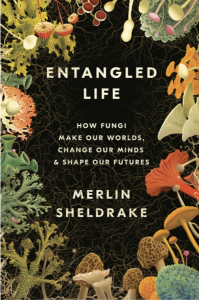 Entangled Life: How Fungi Make Our Worlds, Change Our Minds & Shape Our Futures
Entangled Life: How Fungi Make Our Worlds, Change Our Minds & Shape Our Futures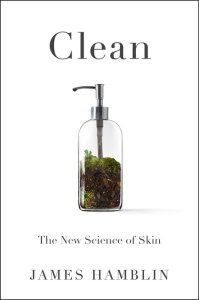 Clean: The New Science of Skin
Clean: The New Science of Skin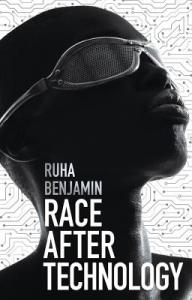 Race After Technology: Abolitionist Tools for the New Jim Code
Race After Technology: Abolitionist Tools for the New Jim Code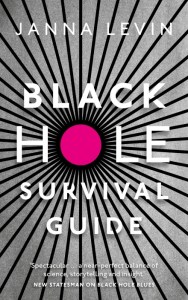 Black Hole Survival Guide
Black Hole Survival Guide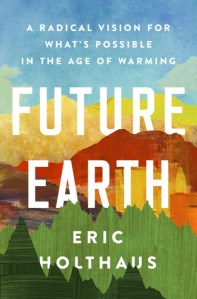 Future Earth: A Radical Vision for What’s Possible in the Age of Warming
Future Earth: A Radical Vision for What’s Possible in the Age of Warming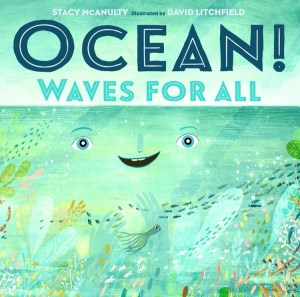 Ocean! Waves For All
Ocean! Waves For All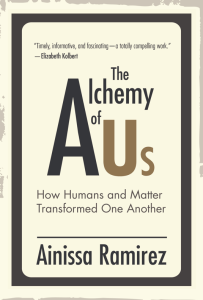 The Alchemy of Us: How Humans and Matter Transformed One Another
The Alchemy of Us: How Humans and Matter Transformed One Another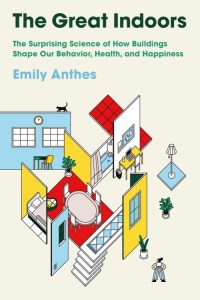 The Great Indoors: The Surprising Science of How Buildings Shape Our Behavior, Health, and Happiness
The Great Indoors: The Surprising Science of How Buildings Shape Our Behavior, Health, and Happiness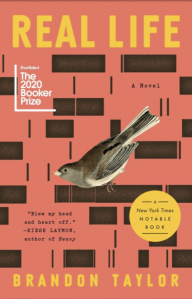 Real Life: A Novel
Real Life: A Novel 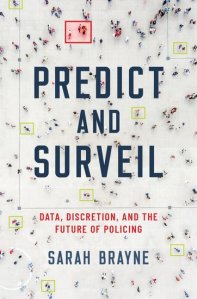 Predict and Surveil: Data, Discretion, and the Future of Policing
Predict and Surveil: Data, Discretion, and the Future of Policing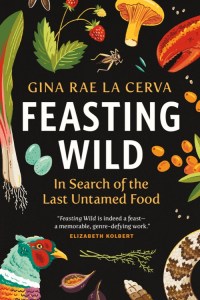 Feasting Wild: In Search of the Last Untamed Food
Feasting Wild: In Search of the Last Untamed Food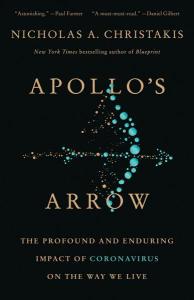 Apollo’s Arrow: The Profound and Enduring Impact of Coronavirus on the Way We Live
Apollo’s Arrow: The Profound and Enduring Impact of Coronavirus on the Way We Live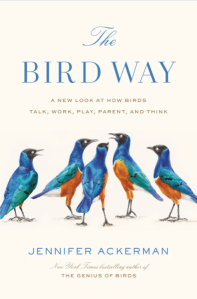 The Bird Way
The Bird Way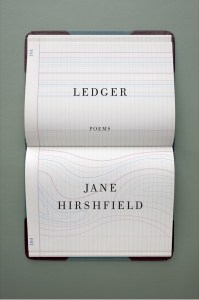 Ledger
Ledger